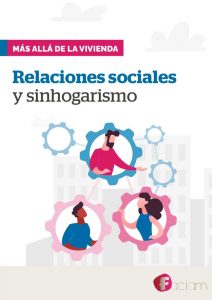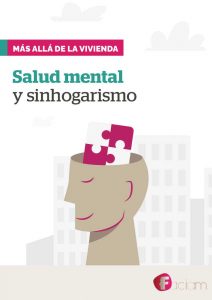How do we understand homelessness?
Our comprehensive framework
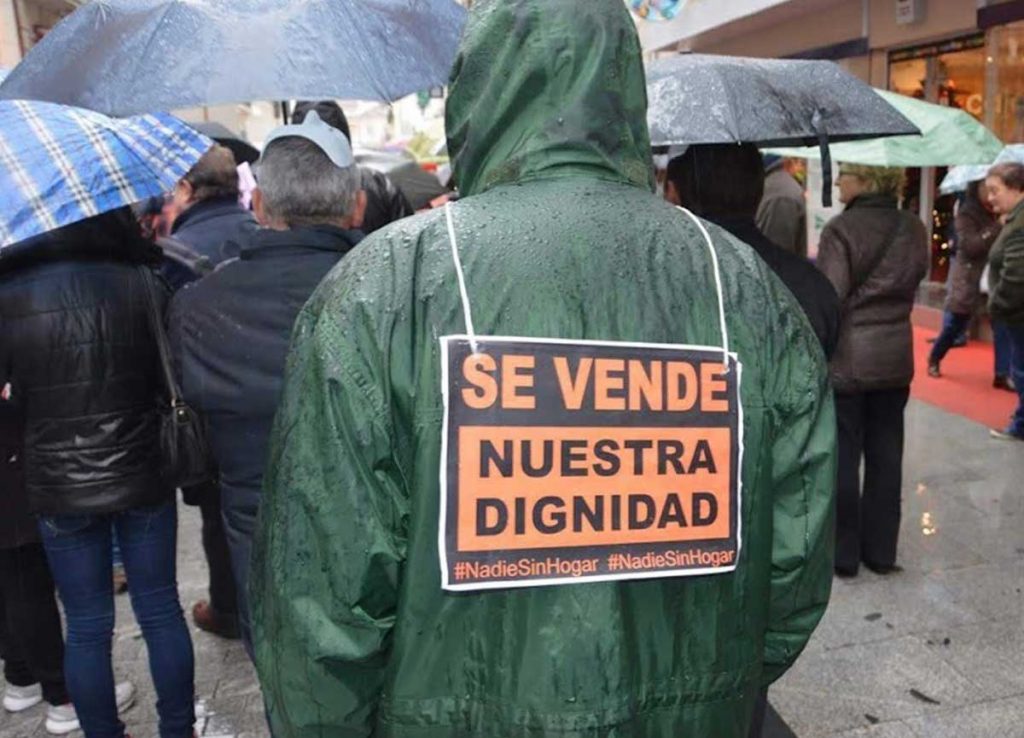
FACIAM brings together in its network of entities a humanistic approach to homelessness. The entities of the network strengthen their common raison d’être: a comprehensive vision of the people they support. We maintain three elements in dialogue:
- A community perspective in which society plays a fundamental role in the genesis of the poverty of its individuals and must become a lever for their recovery;
- An understanding that the individual in exclusion is much more than his or her isolated material deprivations and must face the whole that gives meaning to his or her dignity.
- A confidence in people’s abilities that will be the necessary bridge to facilitate the best possible interaction between the individual and the community.
We understand homelessness as a multidimensional, multicausal reality where individual biographies define which are the determining factors, adjacent or consequent to the situations surrounding homelessness.
Mental health, situations of dependency, personal and family breakdown, lack of income, migratory processes, the labor market, origin, age, gender, loneliness and isolation, addictions, etc. make up long stories in the lives on the street. All these aspects always have a triple face. One structural, one community and one individual.
We are committed to programs that respond to these realities in order to find a home where the different dimensions of the human being have a place.
Socio-residential exclusion is not only a situation of violation of a right or of mere material deprivation. If the recognition of housing as a fundamental right should be the starting point, simplifying the phenomenon of homelessness to a strictly housing-based approach will not provide an answer to a phenomenon that is diverse in both its causes and its consequences. The reality of homelessness is wrapped in multiple interdependent layers that must be addressed synergistically.
If homelessness is explained in the absence of housing, recovery must start from it and from there focus on harm reduction and recovery.
Who are the homeless?
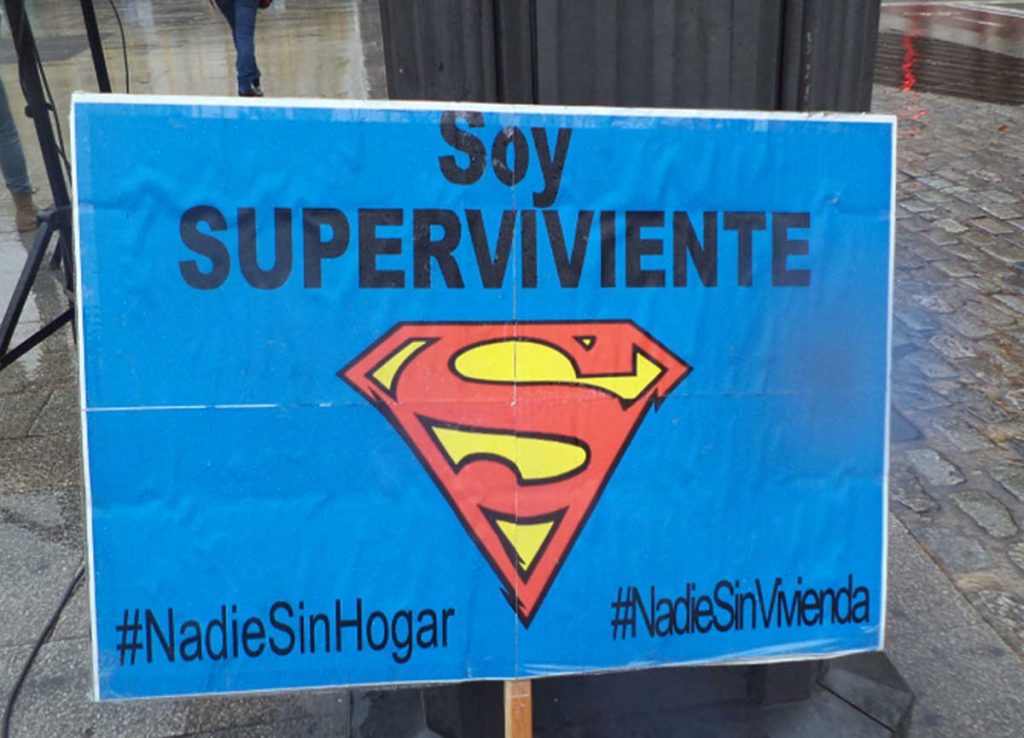
FEANTSA has developed a European typology of homelessness and housing exclusion (ETHOS) as a means to improve the understanding and measurement of homelessness in Europe, and to provide a common “language” for transnational exchanges on homelessness.
Regarding the typology and diversity of situations, homeless people are not only those who, because they are on the street, are more visible to us. Homeless people are also those living in temporary housing, shelters, hostels, shelters or institutions (prisons, health care centers, hospitals). In addition, there are those who live in unsafe housing, more than 800,000 according to the FOESSA survey (without a rental contract, have been evicted or live under the threat of violence) and those who live in inadequate housing, more than 1,300,000 households according to the same source (without adequate supplies, with deficits in construction, etc.). In Spain, data indicate that more than 33,000 people continue to face the most extreme situation of homelessness (living on the street or in temporary housing) every day.
Eradicating Homelessness – Our Proposals
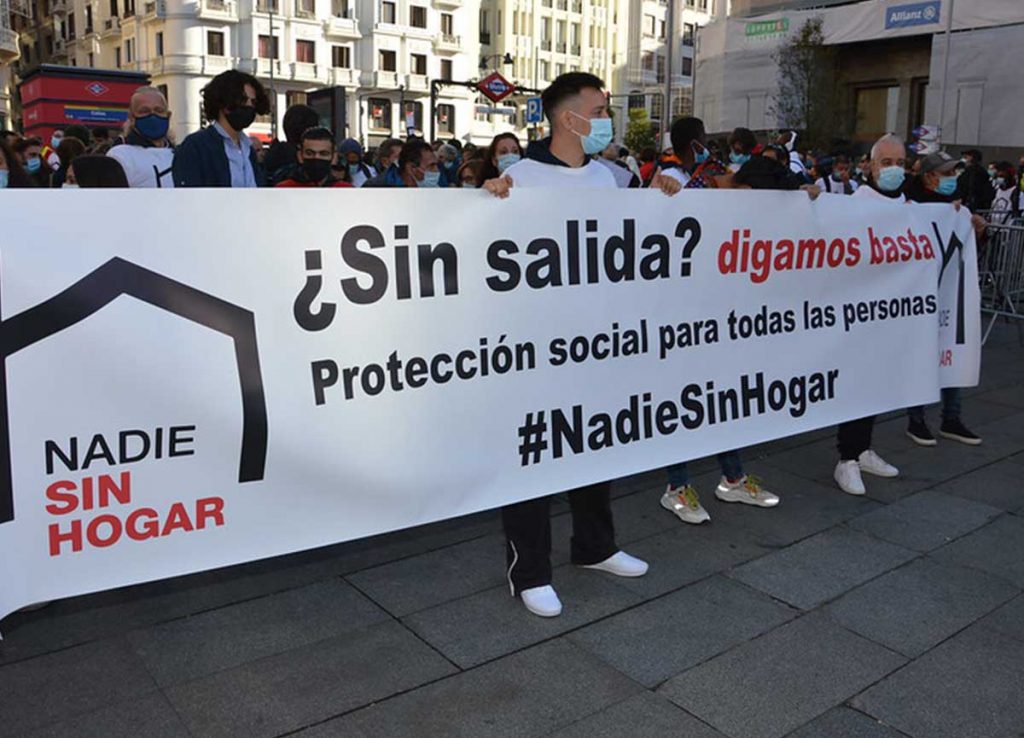
Without permanent public housing policies, it is not possible to stop the increase in the number of homeless people and the processes of residential exclusion. The residential resources that are linked to the care networks of public or subsidized social services cannot meet the need for permanent private housing.
2. We believe that strengthening mental health care resources will be key in a future reconfiguration of homelessness networks. Dual services, the training of health network professionals and the provision of preventive health care tools for homeless resources.
3. We need to make visible and understand the reality of women who are homeless, offering safe spaces, with a gender perspective and in which personal recovery is facilitated and the violence suffered is addressed.
4. A model of prevention and coping with homelessness requires the simultaneous development of the right to have a community (family, close social network) in which to develop. We need to focus on the mechanisms of socialization and the fight against the psychosocial deterioration suffered by these people. Eradicating homelessness is not possible without community. A model that prioritizes only the residential is bound to generate new fractures and inequalities.
5. We rethink and model collective housing alternatives from social innovation in terms of greater privacy, but that does not lead to greater isolation . Failure to work on the creation and improvement of social relationships and support networks of people in situations of homelessness and residential exclusion can lead to a chronification in the care networks or cause inclusion programs to fail.
6. The labyrinth of administrative bureaucracy expels the most vulnerable people from the protection system. The different governments, both central and autonomous, must advance in the development of policies of trust towards potential recipients of economic benefits, responding quickly to their needs.
7. We consider the response in terms of prevention and a specific approach to the processes of youth homelessness to be key . Bridge programs are needed that contemplate the transition to adulthood, coordination with other resources and services and a shock and comprehensive approach.
8. We integrate the dimension of spirituality, understood not only in the religious aspect but also in the transcendent aspect, in the processes of accompanying people in situations of homelessness and residential exclusion. We cannot ignore the needs of many people in this dimension in social intervention processes.
9. Intersectionality characterizes the processes of social exclusion. We note that the different “profiles” that we can identify within homelessness do not derive solely from the degree of accumulation of social disadvantage, but also from the complex and specific interaction of processes that give rise to qualitative differences in the characteristics of homelessness. Considering this complexity will help to improve processes and programs by avoiding oversimplification of the intervention.
10. It is especially important to keep in mind that the multiplicity of the causes and consequences of homelessness means that we cannot generate universally valid “recipes” to tackle and redirect the biographies of exclusion that characterize these citizens. The analysis of homelessness requires the simultaneous consideration of a broad set of socioeconomic, socio-demographic and biographical processes.

